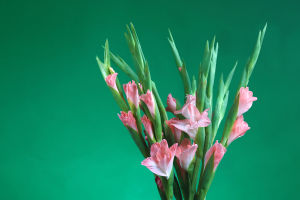The Anemone, a genus of plants within the Ranunculaceae family, is widely distributed across temperate and cold regions.
With its diverse species, vibrant colors, and graceful forms, the anemone serves not only as an ornamental plant but also plays significant roles in ecosystems and traditional medicine.
This article will explore the anemone's basic characteristics, ecological value, and cultural symbolism in detail.
1. Basic Characteristics
Anemones are renowned for their unique flower shape and delicate petals. They typically exhibit simple or semi-double structures, with three or more petals surrounding the central stamens and pistils.
The flower colors are rich and varied, ranging from white, pink, and purple to blue, offering a vivid visual impact. The leaves of anemones are slender, often lobed or toothed, which adds to their light and elegant appearance.
The stems of anemones are usually slender, and their blooming seasons are typically in spring or autumn, thriving in cooler environments.
2. Ecological Value
Anemones hold significant ecological value in nature. First and foremost, they provide crucial nectar and pollen resources for many insects, such as bees and butterflies, especially in spring and autumn when anemones bloom and fill a gap in the availability of nectar plants.
Additionally, anemones offer shelter and habitat for some small animals. Their underground rhizomes are resilient, enabling the plants to survive and reproduce in unfavorable growing conditions, which helps improve soil quality and promotes microbial activity in the soil.
As perennial plants, anemones have long life cycles and can provide lasting ground cover, contributing to soil erosion control and maintaining the stability of ecosystems. In forests or grasslands, anemones often grow alongside other plants, forming stable plant communities that positively impact ecological balance.
3. Cultural Symbolism
Anemones have deep symbolic significance in many cultures. In ancient Greek mythology, the anemone is closely associated with love and sorrow. According to legend, Adonis was wounded during a hunt, and his spilled blood turned into beautiful anemones. Therefore, anemones symbolize lost beauty.
In Western culture, anemones are often seen as symbols of fragility and the transience of life due to their relatively short blooming period. However, their graceful sway in the wind reflects a delicate strength.
4. Modern Applications
In modern horticulture, anemones are highly popular for their beautiful appearance and vibrant colors. They are frequently used in flower beds, borders, and as potted plants.
Their graceful blossoms and color combinations make them highly decorative in garden design. Additionally, anemones are commonly used as cut flowers in floral arrangements, especially in weddings or romantic settings, where their floral language symbolizes purity, innocence, and sincere feelings.
The anemone, as a beautiful plant, has captivated people's hearts not only with its diverse species and brilliant colors but also through its vital role in ecosystems and cultural symbolism. By appreciating anemones, we can not only experience the beauty of nature but also understand the coexistence of fragility and strength in life.


